Denafrips Ares II DAC
.jpg?KeepThis=true&TB_iframe=true&height=430&width=700)
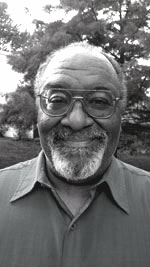 Okay, I’ll admit I was smitten. There is just something addictive, even special, about the sound of an R2R ladder DAC. After spending several months this summer with R2R DACs from Bricasti and Rockna Audio, I knew in which direction I wanted to go. If I had my druthers, I would have wound up with either of those two DACs, but seeing as I am, like many of you-financially challenged, they were just a skosh too expensive. So I started doing my homework, looking online, and asking some of my audiophile pals what their thoughts were on which direction I should take. All the while, there’s a weird name that kept showing up in my searches; Denafrips. What on earth is a “Denafrip?” What does it mean, and what does Denafrip have to do with audio? The more I tried to dismiss it as a made-up name, the more I saw it during my search for more DAC knowledge. My world-wide-web searching soon took me to a website and a familiar name.
Okay, I’ll admit I was smitten. There is just something addictive, even special, about the sound of an R2R ladder DAC. After spending several months this summer with R2R DACs from Bricasti and Rockna Audio, I knew in which direction I wanted to go. If I had my druthers, I would have wound up with either of those two DACs, but seeing as I am, like many of you-financially challenged, they were just a skosh too expensive. So I started doing my homework, looking online, and asking some of my audiophile pals what their thoughts were on which direction I should take. All the while, there’s a weird name that kept showing up in my searches; Denafrips. What on earth is a “Denafrip?” What does it mean, and what does Denafrip have to do with audio? The more I tried to dismiss it as a made-up name, the more I saw it during my search for more DAC knowledge. My world-wide-web searching soon took me to a website and a familiar name.
I found the website for an audio company called “Vinshine,” located in Singapore. They seemed to be the people you’d contact if you had any interest or questions regarding anything having to do with Denafrips. It also appears that DACs aren’t the only pieces of audio gear that Denafrips provides. They, too, design amps, preamps, D to D converters, as well as DACs. Reading a bit further on the Vinshine website, I saw the name Alvin Chee. Alvin Chee, founder and owner of Vinshine Audio, was the technical gentleman I worked with when I did the Kinki Studio EX-M1 integrated amplifier review back in April. The Kinki is an excellent sounding integrated and one I would not hesitate to use again. And Alvin Chee was very helpful with technical questions and helped customers out with issues that did not require them to send their gear elsewhere. I was soon in touch with Alvin, yeah, he remembered ole Michael Wright, and we discussed doing this Denafrips Ares II DAC review.
The Ares II is an R2R ladder DAC. Ladder DACs have been around for a while, late 80s-early 90s. They are challenging to do right because someone with a lot of time on his hands has to pick out these small, little resistors of differing values and put them together on a board in place of a chipset. You can see how manually intensive that would be. I imagine you need exceptional eyesight and a steady hand to put one of these masterpieces together. My vision is nowhere near what it used to be, nor my hands as steady. This situation brings to mind Gilbert Yeung, formerly of Blue Circle Audio fame, building an amplifier using op-amps for the output. You always end up asking: “Why do it like that?” and “Does it really take all that?” Well, as in the case of Gilbert Yeung’s masterpiece, the NSL power amplifier, the answer is “Yes, because it sounds best that way.”
Description
The Ares II arrived a couple of weeks after Alvin Chee, and I spoke. It’s a small yet very solid, very well-built piece of equipment measuring 215mm x 230mm x 45mm and weighing about 7.5 lbs. The Ares II’s chassis is black. On the front panel, there is a large On/Off/Standby button. The next five smaller buttons are for your choice of digital input: USB, Coaxial 1, Coaxial 2, Optical 1, Optical 2. There are two more buttons for Phase and Mute. Located on the back panel are single RCA and XLR outputs, one USB, two optical and coaxial inputs.
Inside, you will see the two balanced R2R ladder DACs filled out with 0.01% resistors laid out in balanced configuration (one per channel), a good-sized 60VA Precision Audio transformer (considering the size of the Ares II), and rows of small capacitors comprise the power supply. The Ares II has two sampling modes, Oversampling OS and Non-Oversampling NOS is an excellent feature to have at this price-point. Which of the oversampling modes you choose is subjective. I felt that the NOS mode sounded warmer and softer overall. The OS mode, which I liked more, was more dynamic, had better separation, and the high frequencies sounded more extended and livelier. Please refer to the Denafrips website to get the specifics on how to go back and forth between OS/NOS and the fast and slow filters, which only work in the OS mode.
How It Sounds
 I let the Ares II break-in for 4-5 days before giving it a serious listen. Having done a bit of listening to DACs over the summer, I have reached a couple of pertinent but general conclusions. R2R ladder DACs have a slightly smoother, more natural, organic sound that does a good job of capturing music as you would at a live music event. However, the popular DAC chipsets commonly used today, like those from Burr-Brown, ESS Sabre, Wolfson, etc., have a slightly better sense of speed, liveliness, and dynamics. I find these differences to be more about nuances than I would say absolutes. Every manufacturer builds their equipment to perform and sound a particular way and that is what we music lovers are so addicted to the hobby. With that being said, I was not expecting the level of performance and refinement I got from the Ares II. A few years back, I was using a similarly priced Teac UD-503 DAC as my reference. Digital equipment has come a long way. I am not comparing the two DACs, but the little Ares II operates on a different level. Its musical persona would be John Fogerty’s Centerfield; “Put me in coach, I’m ready to play.” My comments referring to the Ares II’s sonic performance pertain to how it sounded in the OS (oversampling) mode, which I preferred. The little Ares II does not have to take a backseat to anyone and is willing to prove itself ably. Tonally, like most ladder DACs I’ve heard, except for the Bricasti M3 (I need to talk to Brian Zolner about this), the Ares II is a little bit on the warm side.
I let the Ares II break-in for 4-5 days before giving it a serious listen. Having done a bit of listening to DACs over the summer, I have reached a couple of pertinent but general conclusions. R2R ladder DACs have a slightly smoother, more natural, organic sound that does a good job of capturing music as you would at a live music event. However, the popular DAC chipsets commonly used today, like those from Burr-Brown, ESS Sabre, Wolfson, etc., have a slightly better sense of speed, liveliness, and dynamics. I find these differences to be more about nuances than I would say absolutes. Every manufacturer builds their equipment to perform and sound a particular way and that is what we music lovers are so addicted to the hobby. With that being said, I was not expecting the level of performance and refinement I got from the Ares II. A few years back, I was using a similarly priced Teac UD-503 DAC as my reference. Digital equipment has come a long way. I am not comparing the two DACs, but the little Ares II operates on a different level. Its musical persona would be John Fogerty’s Centerfield; “Put me in coach, I’m ready to play.” My comments referring to the Ares II’s sonic performance pertain to how it sounded in the OS (oversampling) mode, which I preferred. The little Ares II does not have to take a backseat to anyone and is willing to prove itself ably. Tonally, like most ladder DACs I’ve heard, except for the Bricasti M3 (I need to talk to Brian Zolner about this), the Ares II is a little bit on the warm side.
The warmth is not over-done but is sonically on the warm side of neutral. Still, the Ares II is fast, detailed, airy, and extended on top. The midrange sounded surprisingly good regardless of its price point. Instruments and vocalists were portrayed with a good-sized tonal color palette. The Ares II portrayed brass instruments, especially horns and saxophones, with that little extra tonality you hear live at the jazz club that isn’t generally on digital recordings or CDs. The Ares II also handles bass extremely well and much better than I had imagined. Its mid-bass and deep bass performance was slightly fuller than I would like but never so much so that it was an annoyance or changed my system’s character. Suffice to say, the Ares II is not a “one-note bass” player and does have good extension in the lower regions. The Ares II does well with dynamics and transient response. The following are some of my musical selections used to evaluate the Ares II.
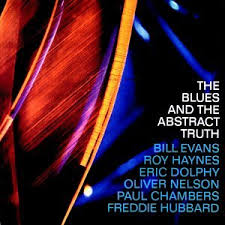 One of my very favorite saxophone tracks to listen to is Stolen Moments, from Oliver Nelson’s classic disc, “The Blues and the Abstract Truth” [Impulse IMPD-154]. What makes Nelson’s saxophone so appealing to me is the warm, rich textures he has coming out of his saxophone. This proved especially so with the Ares II inserted, both streaming from Tidal and coming out of my CD player. In particular, on this track, listening to Oliver’s saxophone and Freddie Hubbard’s trumpet, I felt I heard more of those tonal colors than I usually do.
One of my very favorite saxophone tracks to listen to is Stolen Moments, from Oliver Nelson’s classic disc, “The Blues and the Abstract Truth” [Impulse IMPD-154]. What makes Nelson’s saxophone so appealing to me is the warm, rich textures he has coming out of his saxophone. This proved especially so with the Ares II inserted, both streaming from Tidal and coming out of my CD player. In particular, on this track, listening to Oliver’s saxophone and Freddie Hubbard’s trumpet, I felt I heard more of those tonal colors than I usually do.
The piano is another favorite of mine, and two pianists I can’t get enough of are Horace Silver and Hampton Hawes. I like to listen to Horace Silver because not only is he a master of the keys, his playing is always cool and calm, never drawing too much attention to itself. On his classic, “In Pursuit of the 27th Man” [Blue Note BN-LAO54-F], the title track has him playing at his understated best, with David Friedman’s vibraphone driving the piece and Mickey Roker’s drums in full support. Played through the Ares II, I noticed that not only are you able to follow Silver’s melodic playing easily, but Mr. Roker’s percussion work demonstrated the Ares II’s exceptional transient response to make this selection sound involving and insightful. The Ares II did not disappoint as the percussion sounded believable while the piano’s attack and decay sounded convincing. Likewise, on Hampton Hawes’ work, Sermon [Contemporary C-7653], which I love for its emotive playing style, the Ares II communicated Mr. Hawes’ energy and emotion on the tracks “Just a Closer Walk With Thee” and “Go Down Moses.”
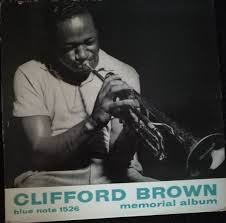 On the trumpet, we have Clifford Brown playing Easy Living, from his “Memorial Album” [Blue Note BST 81526]. Again, the Ares II allowed me to hear more of Mr. Brown’s speed, agility, and all-around talent. It does admirably with orchestral music too. Malcolm Arnold and the London Symphony Orchestra’s album, Arnold Overtures [Reference Recordings RR-48], directed by David Nolan, has an outstanding amount of the recording’s hall and air. On tracks like “Sussex Overture” and “Commonwealth Christmas Overture,” the Ares II delivered cymbals and triangles with natural decay and sparkle. When the horns blare, and the tympani is struck, the sound rolls and fills the hall. The Ares II captured all of the sonic action and did an excellent job of separating the instruments allowing me to follow the musicians more easily. A vocal favorite of mine is Chris Stapleton’s “Death Row” on his From A Room: Volume 1 [Mercury Nashville] CD. This track does a good job of capturing my imagination and making me get caught up in the performance. Mr. Singleton singing about what someone on death row could be going through is compelling. The Ares II does a superb job of capturing the vocal power and emotion Mr. Stapleton sings with along with his guitar play. Also of note is J.T. Cure’s strong bass-line that adds to the experience of delving into this thought-provoking track.
On the trumpet, we have Clifford Brown playing Easy Living, from his “Memorial Album” [Blue Note BST 81526]. Again, the Ares II allowed me to hear more of Mr. Brown’s speed, agility, and all-around talent. It does admirably with orchestral music too. Malcolm Arnold and the London Symphony Orchestra’s album, Arnold Overtures [Reference Recordings RR-48], directed by David Nolan, has an outstanding amount of the recording’s hall and air. On tracks like “Sussex Overture” and “Commonwealth Christmas Overture,” the Ares II delivered cymbals and triangles with natural decay and sparkle. When the horns blare, and the tympani is struck, the sound rolls and fills the hall. The Ares II captured all of the sonic action and did an excellent job of separating the instruments allowing me to follow the musicians more easily. A vocal favorite of mine is Chris Stapleton’s “Death Row” on his From A Room: Volume 1 [Mercury Nashville] CD. This track does a good job of capturing my imagination and making me get caught up in the performance. Mr. Singleton singing about what someone on death row could be going through is compelling. The Ares II does a superb job of capturing the vocal power and emotion Mr. Stapleton sings with along with his guitar play. Also of note is J.T. Cure’s strong bass-line that adds to the experience of delving into this thought-provoking track.
A Few More Thoughts
 As you can tell by my comments, I liked the Ares II. It is well made and well designed. When it resided in my system, I did quite a bit of cable switching in and out. I had my Marantz cd player, Blue Circle DAC, and Bricasti M5 network renderer hooked up to it and changed cables in and out almost daily. The Ares II has good functionality, and everything works as advertised with no issues. The only real complaint I had about the Ares II is those darn little LEDs. Blind as I am, I had to have my face too close to the DAC to see which LEDs were on and which function was in use. Now, in terms of comparisons, I loved the fact that the Ares II could play PCM 192 kHz recordings out to 1536 kHz on USB, which is something my Blue Circle DAC cannot do. The Ares II could also play DSD64 files on all inputs and out to DSD1024 on the USB input. As with any other DAC, there were some 192 kHz files that sounded sublime and some that I concluded that making that recording was a waste of time and not something I would brag about. Not surprisingly so, the same was true with some DSD recordings, some of which were great, and some didn’t sound good at all. The Ares II sounded good using SPDIF cable between it and the source or Bricasti M5 network renderer, but the USB’s performance was good too. Playback at the USB input allowed for the usage of hi-rez files, both the ones I had on my hard-drive and ones on Qobuz as well. As I did with the expensive Rockna and Bricasti DACs, I still preferred the analog-like smoothness provided through a suitable SPDIF cable. It’s only a personal preference, but music through the Ares II USB input was still quite good.
As you can tell by my comments, I liked the Ares II. It is well made and well designed. When it resided in my system, I did quite a bit of cable switching in and out. I had my Marantz cd player, Blue Circle DAC, and Bricasti M5 network renderer hooked up to it and changed cables in and out almost daily. The Ares II has good functionality, and everything works as advertised with no issues. The only real complaint I had about the Ares II is those darn little LEDs. Blind as I am, I had to have my face too close to the DAC to see which LEDs were on and which function was in use. Now, in terms of comparisons, I loved the fact that the Ares II could play PCM 192 kHz recordings out to 1536 kHz on USB, which is something my Blue Circle DAC cannot do. The Ares II could also play DSD64 files on all inputs and out to DSD1024 on the USB input. As with any other DAC, there were some 192 kHz files that sounded sublime and some that I concluded that making that recording was a waste of time and not something I would brag about. Not surprisingly so, the same was true with some DSD recordings, some of which were great, and some didn’t sound good at all. The Ares II sounded good using SPDIF cable between it and the source or Bricasti M5 network renderer, but the USB’s performance was good too. Playback at the USB input allowed for the usage of hi-rez files, both the ones I had on my hard-drive and ones on Qobuz as well. As I did with the expensive Rockna and Bricasti DACs, I still preferred the analog-like smoothness provided through a suitable SPDIF cable. It’s only a personal preference, but music through the Ares II USB input was still quite good.
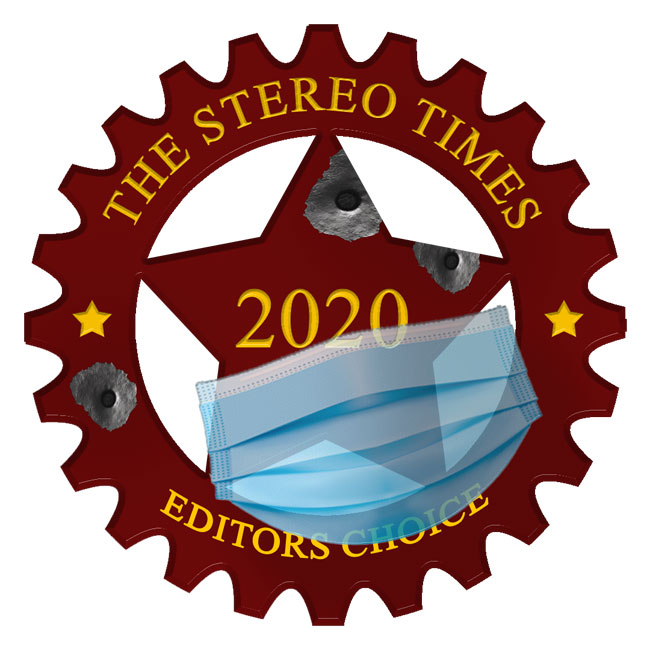 Warts in the Ares II performance only began to show up when you listen to its performance compared to DACs 5-6 times its cost. Those DACs, such as the Bricasti M3 or the Rockna Wavelight, will give you tighter bass performance, have slightly better focus and are somewhat more dynamic. But at the same time, if you were looking at DACs of that caliber, you can take a listen to the Denafrips Venus and Terminator and get sound that’s comparable to the more expensive DACs. Ah, to be able to dream. For the rest of us more modestly budgeted audiophiles, the Ares II is a godsend because once the music starts playing, and you get past wondering how it compares to costlier DACs, you begin to listen to music and not give any thought to price. You want to listen to your music and how well the Ares II handles it. I have tried not to prejudice our readers by harping on the Ares II’s price point ($1,028 Singapore dollars, which is $770 US dollars). I am sure the folks at Denafrips would not want me to do that as the Ares II is capable of standing on its performance, regardless of price. Still, there is no getting around the audio performance-per-dollar of the Ares II, which makes it an outstanding value, especially for the audiophile that doesn’t have $2K+ to spend on a full-featured DAC. Simply said, the Denafrips Ares II is one of the all-around best values in high-end digital audio. And for that, it is highly recommended and my choice for Editors Choice! Most Wanted Component.
Warts in the Ares II performance only began to show up when you listen to its performance compared to DACs 5-6 times its cost. Those DACs, such as the Bricasti M3 or the Rockna Wavelight, will give you tighter bass performance, have slightly better focus and are somewhat more dynamic. But at the same time, if you were looking at DACs of that caliber, you can take a listen to the Denafrips Venus and Terminator and get sound that’s comparable to the more expensive DACs. Ah, to be able to dream. For the rest of us more modestly budgeted audiophiles, the Ares II is a godsend because once the music starts playing, and you get past wondering how it compares to costlier DACs, you begin to listen to music and not give any thought to price. You want to listen to your music and how well the Ares II handles it. I have tried not to prejudice our readers by harping on the Ares II’s price point ($1,028 Singapore dollars, which is $770 US dollars). I am sure the folks at Denafrips would not want me to do that as the Ares II is capable of standing on its performance, regardless of price. Still, there is no getting around the audio performance-per-dollar of the Ares II, which makes it an outstanding value, especially for the audiophile that doesn’t have $2K+ to spend on a full-featured DAC. Simply said, the Denafrips Ares II is one of the all-around best values in high-end digital audio. And for that, it is highly recommended and my choice for Editors Choice! Most Wanted Component.


mike wright
A Q&A with Denafrips’ Alvin Chee
MW: I need to know what does Denafrips mean?
AC: It’s the first letter of each of the following words…
Dynamic
Exquisite
Natural
Attractive
Fidelity
Refined
Intoxicating
Pure
Sophisticated
MW: What are your thoughts on the parts/construction of the Ares II?
AC: We use high-quality parts, long life, high endurance components from genuine sources like RSComponent/Digikey/Mouser/Element14.
MW: What did you want to achieve when you designed the Ares II, and were your expectations met?
AC: Ares II, despite being the entry model of DENAFRIPS, it is built with a goal in mind – to achieve the highest sound quality within the price constraints. It is a good entry point for the customers to have a feel of the DENAFRIPS house-sound. As the customers move up the chain, they should expect more refinements, musicality, details, etc.
MW: Are there any options or upgrades available for the Ares II?
AC: No, sir. There aren’t any upgrades available for the Ares II.
Specifications:
Denafrips Ares II DAC
Price: – $1,028 Singapore$ ($770 US)
Vinshine Audio
Website: https://www.vinshineaudio.com
Email: sales@vinshineaudio.com
Specifications:
Proprietary R2R + DSD Architecture
True balanced 24BIT R2R + 6BIT DSD (32 steps FIR Filters)
Native DSD decoding with 0.01% precision resistors
FEMTO Crystal 45.1548MHz, 49.152Mhz
Low Noise Power Supply
FIFO Buffer
Digital Signal Processing via FPGA
DSD1024, PCM1536 Supports On USB Input
Proprietary USB Audio Solution via STM32F446 Advanced AMR Based MCU
Licensed Thesycon USB Driver For Windows Platform
Driverless On Mac & Linux
DSD
DSD64-DoP On All Input
DSD1024 On USB Input Only
PCM
24bits / 44.1, 48, 88.2, 96, 176.4, 192KHz On All Input
1536kHz On USB Input
Sampling Mode: Oversampling OS / Non-Oversampling NOS
Digital Input
Coax x 2
TOSLink x 2
USB
Analog Output
RCA at 2.2Vrms, 625 Ω
XLR at 4.4Vrms, 1250 Ω
Frequency Response: 20-70KHz -3dB
THD+N: 0.004%
S/N Ratio: 115dB
Dynamic Range: >119dB
Stereo Crosstalk: -124dB
AC Power Requirement: 100-240VAC, 50/60Hz (Worldwide Voltage, Manual Selector)
Power Consumption: ≤20W
Dimension: 215 x 230 x 45 mm
Package Dim: 375 x 330 x 115 mm
Package Content: DAC & Power Cord. No remote control.
Weight: 3.5 Kg
Color: Black
Warranty: 36 Months
Mike’s Associated Equipment:
Speakers
Tekton Design Moabs
hORNS Symphony
Amplifier
VAC Signature 200 iQ Amplifiers (used as stereo and mono amps)
BSC Audio BSC100m 100-Watt Mono-amps
Gilbert Yeung Designs NSI-GY Integrated Amplifier
Preamplifier
VAC Renaissance Mk V with Phono
Analog
Merrill Heirloom Turntable
Rowland Research Consonance Tonearm
Transfiguration Phoenix Cartridge
Digital
Asus Laptop w/Fidelizer Pro, Roon, and JRiver v.26 for Hi-Res Files
Blue Circle Audio BC510CR NOS DAC
Marantz SA-7S1 CD Player
Cables
Bricasti XLR Interconnect
Dynamic Design PAAPI
Shunyata Anaconda Interconnect
Silversmith Fidelium Speaker Cable
Clarity Cable USB Digital Cable
Anna Lyric USB Digital Cable
Essential Sound Product Essence II Power Cords
Power Line Conditioner
Essential Sound Products Essence Power Distributor
Blue Circle BC60X1
Accessories
Star Sound Sistrum Rhythm Two Platform Stand
Symposium Acoustics Super Plus Platforms
Symposium Acoustics Ultra Platform
Symposium Acoustics HDSE Rollerblocks
Symposium Acoustics +2 Rollerblocks
Epiphany Stand Systems – Celeste Reference Stand
One thought on "Denafrips Ares II DAC"
Leave a Reply
Stereo Times Masthead
Publisher/Founder
Clement Perry
Editor
Dave Thomas
Senior Editors
Frank Alles, Mike Girardi, Russell Lichter, Terry London, Moreno Mitchell, Paul Szabady, Bill Wells, Mike Wright, and Stephen Yan,
Current Contributors
David Abramson, Tim Barrall, Dave Allison, Ron Cook, Lewis Dardick, John Hoffman, Dan Secula, Don Shaulis, Greg Simmons, Eric Teh, Greg Voth, Richard Willie, Ed Van Winkle, Rob Dockery, Richard Doron, and Daveed Turek
Site Management Clement Perry
Ad Designer: Martin Perry



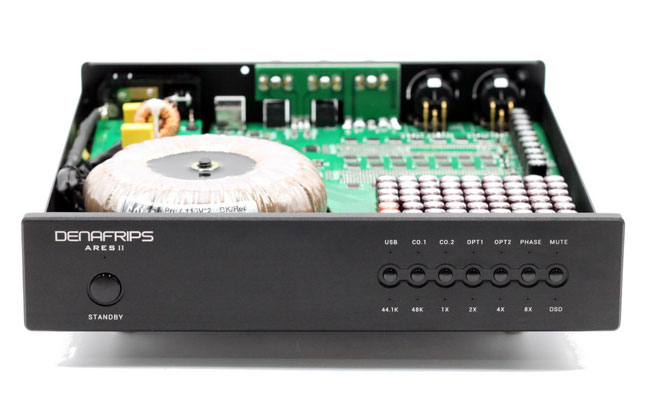
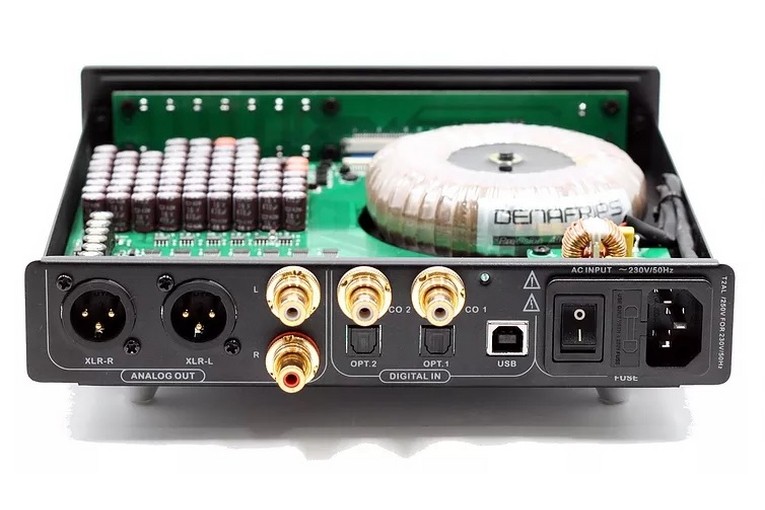




What a nice review, great prose. Thanks!